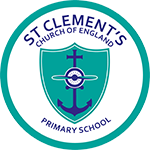Art
Intent
At St Clement’s we follow Kapow Primary’s Art and design scheme of work which aims to inspire pupils and develop their confidence to experiment and invent their own works of art. The scheme is written by experts in their field and designed to give pupils every opportunity to develop their ability, nurture their talent and
interests, express their ideas and thoughts about the world, as well as learning about art and artists across cultures and through history. The scheme supports pupils to meet the National curriculum end of key stage attainment targets and has been written to fully cover the National Society for Education in Art and Design’s progression.
Through our Art curriculum at St Clement’s, we aim to enable the children to let their lights shine by inspiring them to become:
- Inspired and imaginative thinkers who are able to let their personalities shine through different mediums and creative processes.
- Enthusiastic, curious and independent thinkers through being inspired by specialist artists that challenge and fire their imagination and thinking. Pupils are exposed to different perspectives through observation leading them to ask questions and make personal discoveries.
- Motivated, reflective and resilient learners through the celebration of achievement at a variety of levels both in classrooms and across the whole school. We encourage pupils to develop confidence in their own abilities by self and peer assessing and listening to advice from others to achieve their goals.
- Tolerant and responsible citizens through the understanding that everyone is unique and special. In art, pupils have access to cultural richness and diversity enabling them to appreciate and enjoy the arts that enrich lives in the world around us.
Implementation
Kapow Primary’s Art and design scheme of learning is designed with five strands that run throughout. These are:
- Generating ideas
- Using sketchbooks
- Making skills, including formal elements (line, shape, tone, texture, pattern, colour)
- Knowledge of artists
- Evaluating and analysing
Units of lessons are sequential, allowing our children to build their skills and knowledge, applying them to a range of outcomes. The formal elements, a key part of the national curriculum, are also woven throughout units. Key skills are revisited again and again with increasing complexity in a spiral curriculum model. This allows our children to revise and build on their previous learning. Units in each year group are organised into four core areas:
- Drawing
- Painting and mixed-media
- Sculpture and 3D
- Craft and design
Our National curriculum mapping shows which of our units cover each of the National curriculum attainment targets as well as each of the strands. Our Progression of knowledge and skills shows the skills that are taught within each year group and how these skills develop to ensure that attainment targets are securely met by the end of each key stage. The Kapow Art units are fully scaffolded and support essential and age appropriate, sequenced learning, and are flexible enough to be adapted to form cross-curricular links. Creativity and independent outcomes are robustly embedded into the units, supporting students in learning how to make their own creative choices and decisions, so that their art outcomes, whilst still being knowledge-rich, are unique to the pupil and personal.
Lessons are mostly practical in nature and encourage experimental and exploratory learning with pupils in Key Stage 2 using sketchbooks to document their ideas. Key Stage 1 celebrate their art learning by displaying their creativity in the classrooms and at home. Knowledge organisers for each unit are available to support pupils by providing a highly visual record of the key knowledge and techniques learned, encouraging recall of skills processes, key facts and vocabulary. Kapow Primary supports teachers who may lack confidence in their own artistic abilities. Each unit of lessons includes multiple teacher videos to develop subject knowledge and support ongoing CPD. Kapow has been created with the understanding that many teachers do not feel confident delivering the full Art and design curriculum and every effort has been made to ensure that they feel supported to deliver lessons of a high standard that ensure pupil progression.
Kapow Primary’s curriculum is designed in such a way that children are involved in the evaluation, dialogue and decision making about the quality of their outcomes and the improvements they need to make. By taking part in regular discussions and decision-making processes, children will not only know facts and key information about art, but they will be able to talk confidently about their own learning journey, have higher metacognitive skills and have a growing understanding of how to improve.
The impact of Kapow Primary’s scheme can be consistently monitored through both formative and summative assessment opportunities. Each lesson includes guidance to support teachers in assessing pupils against the learning objectives.
After the implementation of Kapow Primary’s Art and design scheme, our children should leave St Clement’s equipped with a range of techniques and the confidence and creativity to form a strong foundation in art and design.

 St Clement's Church of
England Primary School
St Clement's Church of
England Primary School